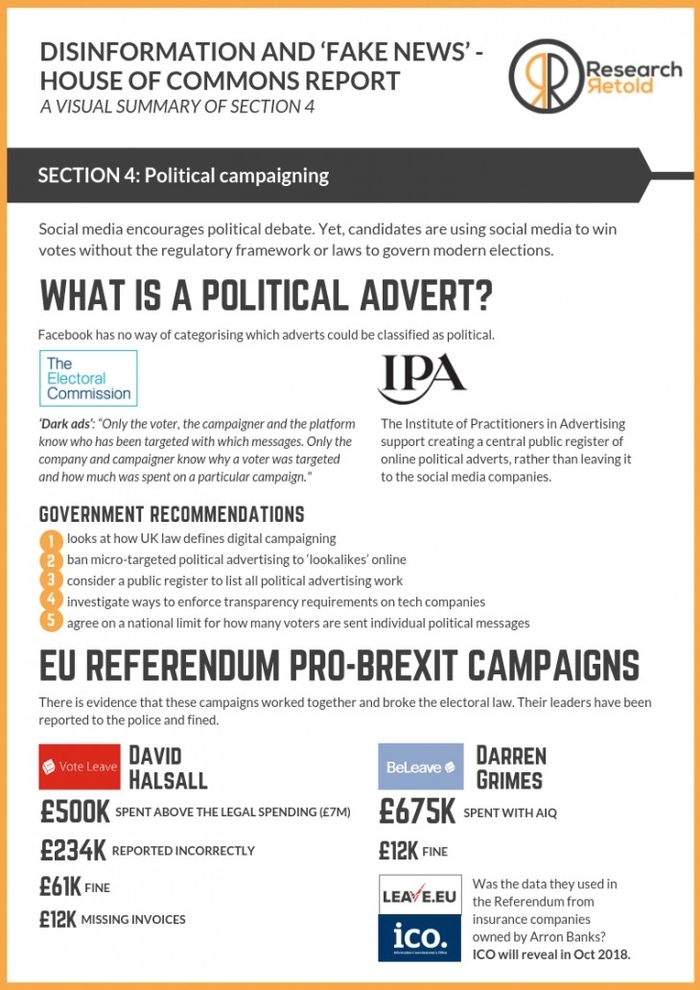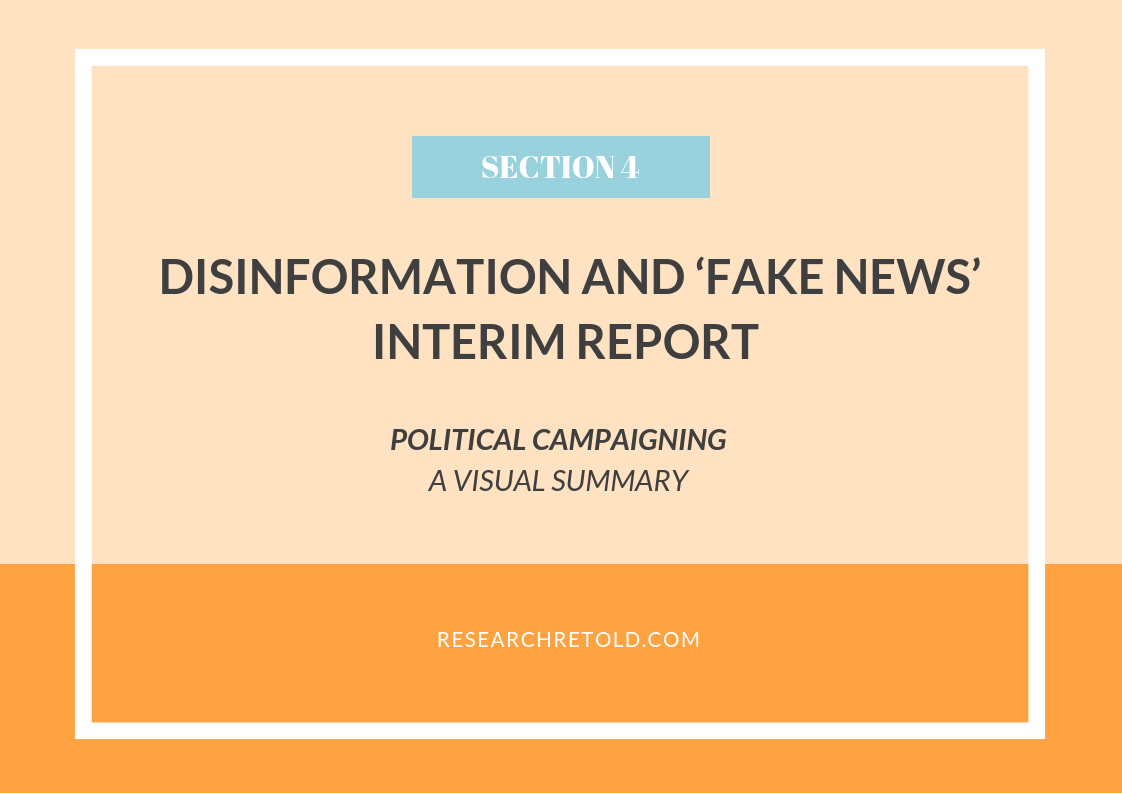In this blog post, we look at the issues around political campaigning and social media and expand on the electoral questions concerning the EU Referendum.
This post is based on Section 4 of the Disinformation and ‘fake news’ report and is the fourth in a series of seven posts.
Let´s begin!
About the report
In July 2018, the House of Commons Digital, Culture, Media and Sport Committee published an Interim Report titled Disinformation and ‘fake news’.
The scope of this report:
To study ‘the spread of false, misleading, and persuasive content, and the ways in which malign players, whether automated or human, or both together, distort what is true in order to create influence, to intimidate, to make money, or to influence political elections.’
A specific focus of the report is to address concerns related to the “political use of social media”.
The report includes seven sections:
1. Definition of fake news and how to spot it
2. Role of tech companies – definition, legal liabilities
3. The issue of data targeting, based on the Facebook, GSR and Cambridge Analytica allegations
4. Political campaigning
5. Russian influence in political campaigns
6. Co-ordination of Departments within Government
7. Digital literacy
What concerns exist around political campaigning and social media?
In this section, the report highlights how social media is changing the game when it comes to political campaigning and political advertising. It outlines the difficulties social media companies have in detecting ‘political adverts’. Moreover, the report gives an indication of what new powers political groups have to campaign on social media. The report also suggests several measures that the government can take to strengthen the regulatory framework around political campaigning and social media.
In the latter part, the section expands on electoral questions concerning the EU Referendum. It focuses on the illegal activities and legal repercussion of groups such as Vote.Leave, Be.Leave and Leave.EU.
The main messages of this section have been summarised into a 1-page visual summary below.
VISUAL SUMMARY OF SECTION 4

Next week we will tackle Section 5 of the Disinformation and ‘fake news’ report.
